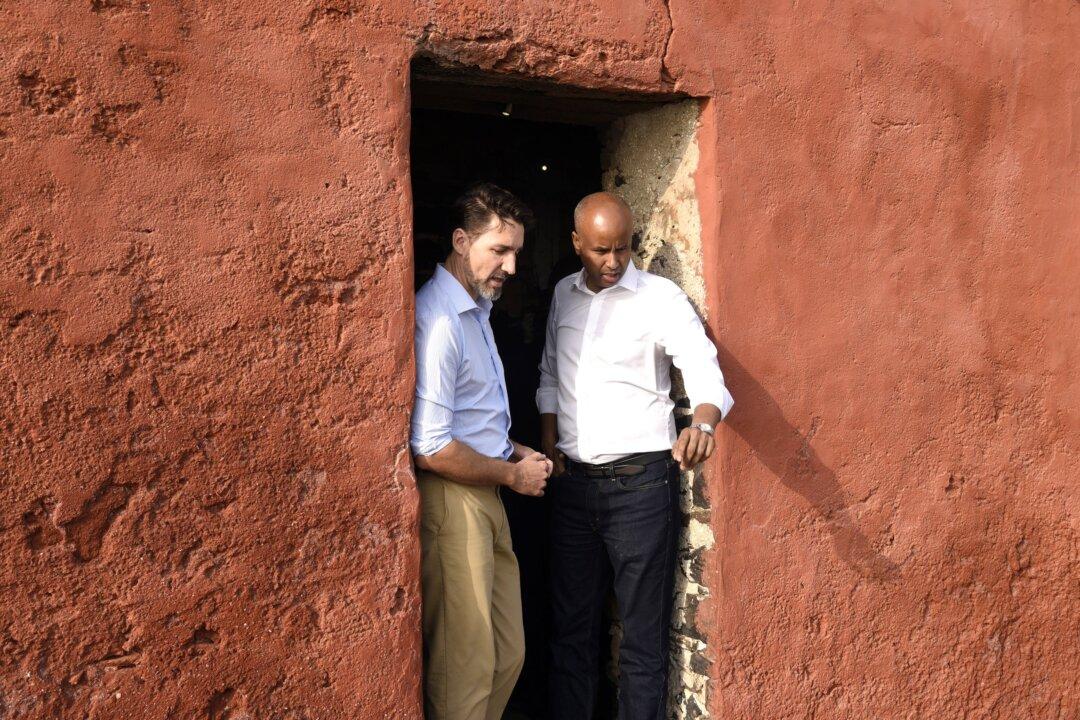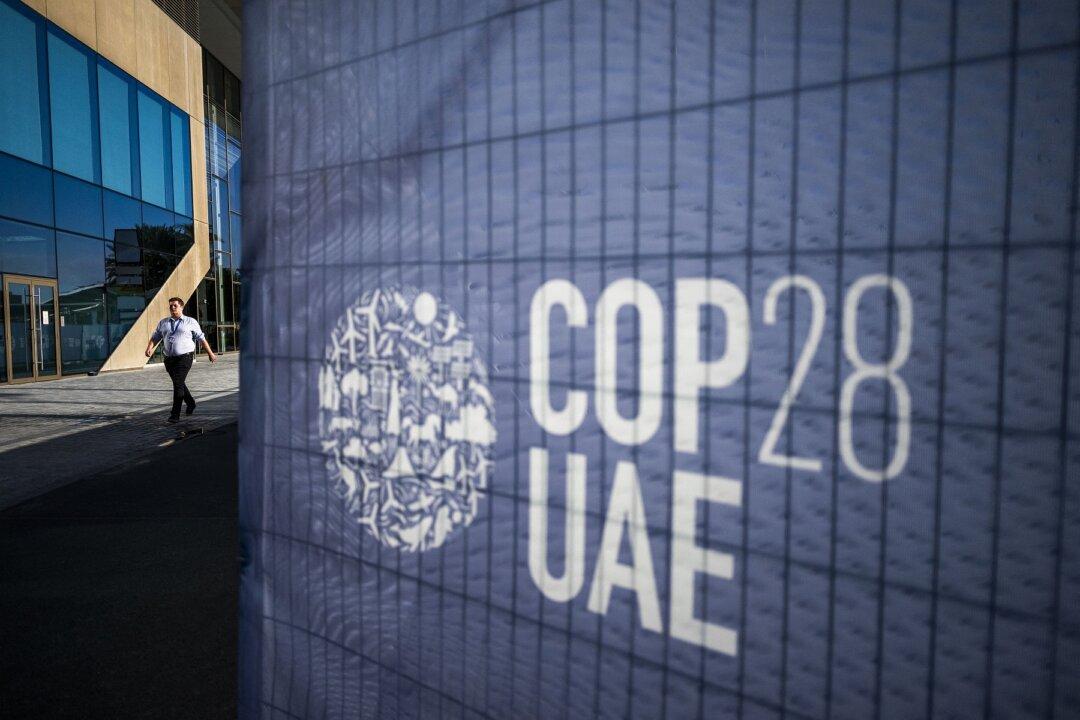An analysis by The Epoch Times shows inflation-adjusted foreign aid expenditures have increased by 25 percent since the Liberals came to power for the period of time between 2015 to 2023, compared to an equivalent number of years during the previous Conservative government.
This marks an increase of $13.8 billion when comparing the $55.9 billion spent between 2008 and 2015 to the $69.7 billion spent between 2015 and 2023, all in 2023 dollars.
Canada’s top-three aid expenditures each year have been in the areas of refugee and asylum seeker settlements, global health, and humanitarian assistance.
Changes Under Current Government
According to an Epoch Times’ analysis, the aid sectors that have seen the largest percentage change in inflation-adjusted funding since the Liberals took power have been in energy generation (led by renewables) with an 87 percent increase, refugee settlement with 85 percent (jump driven by Ukraine war, though even before that the amount had increased), and social infrastructure at 45 percent.Other sectors that saw a rise under the Liberal government are conflict prevention (40 percent), humanitarian assistance (37 percent), health (35 percent), industry (34 percent), population policies/programs and reproductive health (33 percent), general environmental protection (21 percent), business and other services (14 percent), and government and civil society (less than 1 percent).
In Dollars
In 2022-2023, Canada sent $1.78 billion for health expenditures and $1.29 billion in humanitarian assistance internationally.About $786 million was spent in energy generation, distribution, and efficiency in the same year. As Canada’s climate change policy investments increase, aid in renewable generation and other areas related to climate change policies are expected to experience a sharper rise in the coming years.
Aid in government and civil society in 2022-2023 was at $730 million, in education at $681 million, and agriculture, forestry, and fishing at $625 million.
Aid in the multi-sector category, involving areas such as urban and rural developments, was at $462 million in 2022-2023, while $336 million was spent on conflict prevention and resolution, peace, and security.
About $249 million was allocated for aid in general environmental protection in 2022-2023, while $177 million was spent on banking and financial services, and $158 million on water and sanitation.
In the same year, Canada spent $136 million for transport and storage aid, $87 million for industry, $61 million for business and other services, $43 million for communications, and $36 million for trade policy and regulations.
The Recipients
Besides those seeking refuge in Canada, the top-five recipients of Canadian international aid in 2022-2023 were, in order, Ukraine ($5.44 billion, excluding military aid), Nigeria ($277 million), Ethiopia ($251 million), Bangladesh ($234 million), and Tanzania ($229 million).The government says it will document the details of aid given to Gaza since the war began in October 2023 in a future report.
Not counting Ukraine, Canada’s top destination regions of aid in 2022-2023 were Africa ($4.1 billion), Asia ($1.72 billion), and Americas ($1.07 billion). Expenditure in the Middle East was at $819 million that year, in Oceania at $97 million, and another $2.47 billion was spent in other parts of the world.

Distribution Networks
To distribute the aid, besides its own organizations, the government relied on domestic and international civil society groups, international organizations such as U.N. agencies, and the private sector.Top international organizations that Canada contributed to include the U.N. agencies World Food Programme ($545 million), UNICEF ($367 million), and the Global Fund to Fight AIDS, Tuberculosis & Malaria ($334 million).
Top domestic organizations that distributed Canadian government funds internationally include Nutrition International ($54 million), Grand Challenges Canada ($51 million), and Save the Children Canada ($47 million).
In total, Canada provided $2.27 billion to U.N. agencies, $703 million collectively to the International Monetary Fund, the World Bank, and the World Trade Organization, $602 million to regional development banks, and another $1.03 billion to other multilateral organizations.
The government also provided $581 million to “international and global partners,” including organizations such as the Switzerland-based BlueOrchard LAC GDI Fund and responsAbility CSAFS Fund, and another $279 million to “top partner governments,” including the governments of Japan, the U.K., and Tanzania.

Alignment With UN 2030 Agenda
The 2022-2023 annual aid expenditure report for the first time also provides details on how Canada’s international aid lines up with the U.N. 2030 Agenda for Sustainable Development.It consists of 17 “sustainable development goals,” (SDGs) and signatory countries have agreed to help “prioritize progress for those who’re furthest behind.”
For the year 2022, Canada’s “total official support for sustainable development (TOSSD)” was $14 billion, the government’s report says.
- No poverty
- Zero hunger
- Good health and well-being
- Quality education
- Gender equality
- Clean water and sanitation
- Affordable and clean energy
- Decent work and economic growth
- Industry, innovation, and infrastructure
- Reduced inequalities
- Sustainable cities and communities
- Responsible consumption and production
- Climate action
- Life below water
- Life on land
- Peace, justice, and strong institutions
- Partnerships for the goals

Breakdown
Under the health category of aid totalling $1.78 billion in 2022-2023, some of the major items included COVID-19 control, infectious disease control, health policy and administrative management, basic health care and nutrition, and medical services.Major items under humanitarian assistance totalling $1.29 billion included emergency food aid, material relief assistance and services, and relief coordination/protection and support services.
In the energy generation, distribution, and efficiency category, with a total of $786 million, the major items were renewable energy generation, power transmission and distribution, and energy policy and administrative management.
The biggest dollar items under the government and civil society, totalling $730 million, included public sector policy and administrative management, women’s rights organizations and movements, ending violence against women and girls, democratic participation and civil society, and human rights.
Under education, with a total of $680 million, the major items were education policy and administrative management, primary education, vocational training, and secondary education.
In the next sector, agriculture, forestry, and fishing, adding up to $625 million, the major items were agricultural financial services, agricultural policy and administrative management, and agricultural development.
In the population policies/programs and reproductive health, with a total of $473 million, STD control including HIV/AIDS had the highest allocation, followed by reproductive health care, sexual and reproductive rights, and family planning.
The multi-sector aid, coming in at $462 million, had among its highest components research/scientific institutions, disaster risk reduction, and relief of multilateral debt.
The conflict prevention, resolution, peace, and security category, with a total of $336 million, had the highest allocation on civilian peace-building, conflict prevention, and resolution, followed by disarmament of weapons of mass destruction and participation in international peacekeeping operations.
In the “other social infrastructure and services” category, with a total of $252 million, the biggest money was spent on social and welfare services, with the distant second and third areas of expenditures being basic social services and employment policy/administrative management.

In the general environmental protection category, with a total of $249 million, the biggest spending was on environmental policy and administrative management, followed by biodiversity and environmental education/training.
In the banking and financial services aid category, coming in at $177 million, the biggest spending was on financial policy and administrative management, and formal sector financial intermediaries.
In the water and sanitation category, with a total of $158 million, the major items were water supply and sanitation for large systems, as well as water sector policy and administrative management.
For the transport and storage category, with a total of $136 million, the highest spending category was road transport, followed by a distant second for transport policy and administrative management.
In the industry category, with a total of $87 million, the highest amount of money was spent on small and medium-sized enterprises development, followed by agro-industries and industrial policy, and administrative management.
In the business and other services category, with a total of $61 million, the biggest subcategory was business support services and institutions, followed by business development services.
In the communications category, with a total of $43 million, the highest expenditure was in information and communication technology, followed by telecommunications and communications policy/administrative management.
In the trade policy and regulations category, which totalled $36 million, the biggest spending was on trade policy and administrative management, followed by tourism policy and administrative management.
The biggest spending category overall, titled “other aid expenditures,” with an allocated funding of $7.69 billion, had a large segment not classified to any sectors, along with expenditures for refugees and asylum seekers.










